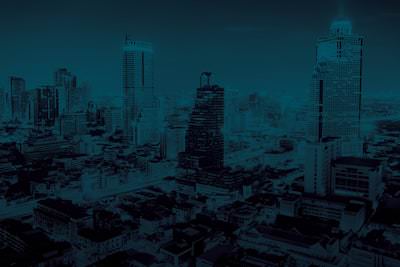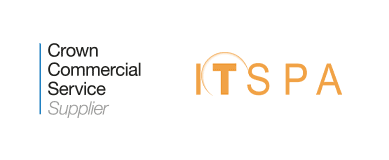In 2020, the UK facilities management market was valued at USD 63.97 billion, and it is expected to reach USD 73 billion by 2026. It is, according to the British Institute of Facilities Management, regarded as the most competitive and mature in Europe. With the end of the pandemic, or at least a pathway to a new normal emerging, there is cautious optimism in the sector for a return to growth; however, COVID has transformed aspects of the industry, providing new challenges to solve: there are headcount shortages in some areas – for example, building operations and maintenance; and there is a rush in demand for strategic planning and innovation to drive efficiencies across all processes.
In the UK Facilities Market Survey, Paul Bagust, RICS Head of Land and Property Standards, commented: “As commercial market sentiment starts to become more optimistic the FM sector will play a very central role its recovery and future performance. With a rush to quality expected but restraints on budgets, inevitable facilities managers will be critical to delivering innovative real estate strategies and solutions. There are encouraging signs of cautious optimism in the sector and FM professionals will continue to be at the heart of delivering safe, sustainable and high performing environments.”
With these challenges in mind, whether you operate in the public sector (NHS, Government, or Schools & Colleges) or private sector (Retail, Commercial offices, Manufacturing & Industrial, Student Accommodation, or Social Housing), read on to discover how remote visual assistance (RVA) technology can help your facilities management organisation more easily meet future challenges and drive operational efficiency.
What is remote visual assistance technology?
Remote visual assistance technology, or remote visual inspection, is a relatively new technology whose usage case has matured, in particular since the pandemic, so that it is now delivering real operational efficiency and customer service improvements to businesses across a number of industries. Remote visual assistance works by allowing the user to take over the smartphone of the person in the field and help them through solving a problem by using augmented reality to annotate on their screen. These features are helping customer service teams to solve problems faster and improve their Net Promoter Score, drive efficiencies for field service teams, and allow inspectors to carry out evaluations without being present.
Sustainability management
Reducing our carbon footprint is a priority for everyone, whether a private citizen or a business. It is a moral imperative, but now also a regulatory one, and a key part of an organisation’s ESR rating – If a business has a bad reputation and public standing in this area, it can even mean they are unable to recruit the staff they want, who are likely invested in the importance of environmental action.
Remote visual assistance helps to enable a business to become more sustainable in several ways:
In the first case, it reduces the number of trips that have to be made to solve a problem. Whether you manage commercial offices, a hospital, or an industrial site, it is likely you will have customers who call you to help solve an issue, and you will have technicians who then usually must go onsite. With remote visual assistance a customer service agent’s ability to take over the camera of the caller’s smartphone and look at, for example, a tenant’s boiler, will enable them to diagnose the problem more easily remotely and thus reduce the likelihood that an engineer needs to be called out. Even when an engineer has to be called, video means they benefit from more accurate insights into the problem, the likelihood they can first accurately get the boiler serial number, and the ability to call a supervisor if there are any more complex issues; this results in a much higher rate of callouts resolved first, eliminating the need for another trip.
In the second instance, energy audits are a key part of improving sustainability; however, in the past, the high cost of getting one has held back many smaller and medium-sized businesses. Remote visual assistance enables that energy audit to be done remotely and surveyors to therefore offer more competitive pricing to those businesses with less deep pockets.
Creating better workplaces and operational agility
COVID has transformed thinking around the office and office space. While a return to the office is happening, it is not as before, but rather a hybrid working system has become the new normal. The implications of this are numerous, but they include a change in emphasis for office spaces: rather than as a functional way to fit your workforce in, but a space designed around collaboration. In addition, In the IBM Institute for Business Value 2021 CEO Study, 56% of CEOs emphasise the need to “aggressively pursue” operational agility and flexibility over the next two to three years.
Businesses are therefore looking for new spaces and in the throes of rethinking and redesigning – this is reflected in the rise in demand for strategic planning and project management services, highlighted in the RICs market survey.
Remote visual assistance can greatly improve collaboration around the process of finding new spaces, working on new designs and doing surveying, making it much more efficient and clearer. There is no need for the whole of a team to visit a site, as they can be given an interactive tour. During the redesign process, it is also possible for the management team remotely to be taken around it and make suggestions on improvements.
Regulatory compliance
Whether it is health and safety, surveying for newly designed spaces, or annual reviews that must be done across your portfolio, remote visual assistance makes it possible for your inspection team to do it from their office or hybrid working environment, without the travel time between sites. Inspectors can sit at a computer and instruct someone onsite to show them what they need to see; in doing so, they can complete six or seven locations in a day rather than three or four.
Servicing
The adoption of technology for the better management of facilities is an important key trend. The addition of sensors, Wi-Fi, gauges, and smart devices is happening at pace, while software solutions with AI, machine learning and analytics are being developed to take advantage of the avalanche of data that will be gathered.
Unfortunately, the downside of these additional systems is added complexity and the likelihood of a greater need to carry out servicing. Remote visual assistance helps by improving communication between those in the field and in the office, making it easier to solve complex problems. If a technician in the field is having trouble resolving something they can bring their team onto the call, show the problem, and have the team use augmented reality and the camera to get close and examine the problem in more detail.
Safety
Remote visual assistance helps with safety concerns in several ways. Despite a return to the office, for a long while yet, businesses will need to put in place and listen to concerns around crowding and space occupancy. By reducing the likelihood, you need to go onsite to resolve issues, RVA technology lowers the need to be greater numbers gathered in an enclosed space, thus protecting your customer or employees.
In addition, it decreases the need to get into cramped or dangerous places and the need to travel – Driving exposes your employee to the possibility of a car accident and tiredness.
Training and Administration
Data analytics are key to improving processes and remote visual assistance helps here too. Rather than just having a written or verbal record of an interaction with a customer or the notes from a technician in the field on how they solved a problem, RVA technology gives you a video and photo record to use for training.
If the software has AI search functionality, then it is possible to categorise, what might amount to thousands of interactions, by something like ‘loose wiring’ and allow your agents to quickly find a relevant case. Once this categorisation is possible, data analytics can be then used to evaluate customer journeys and see more opportunities to improve customer service and sales.














